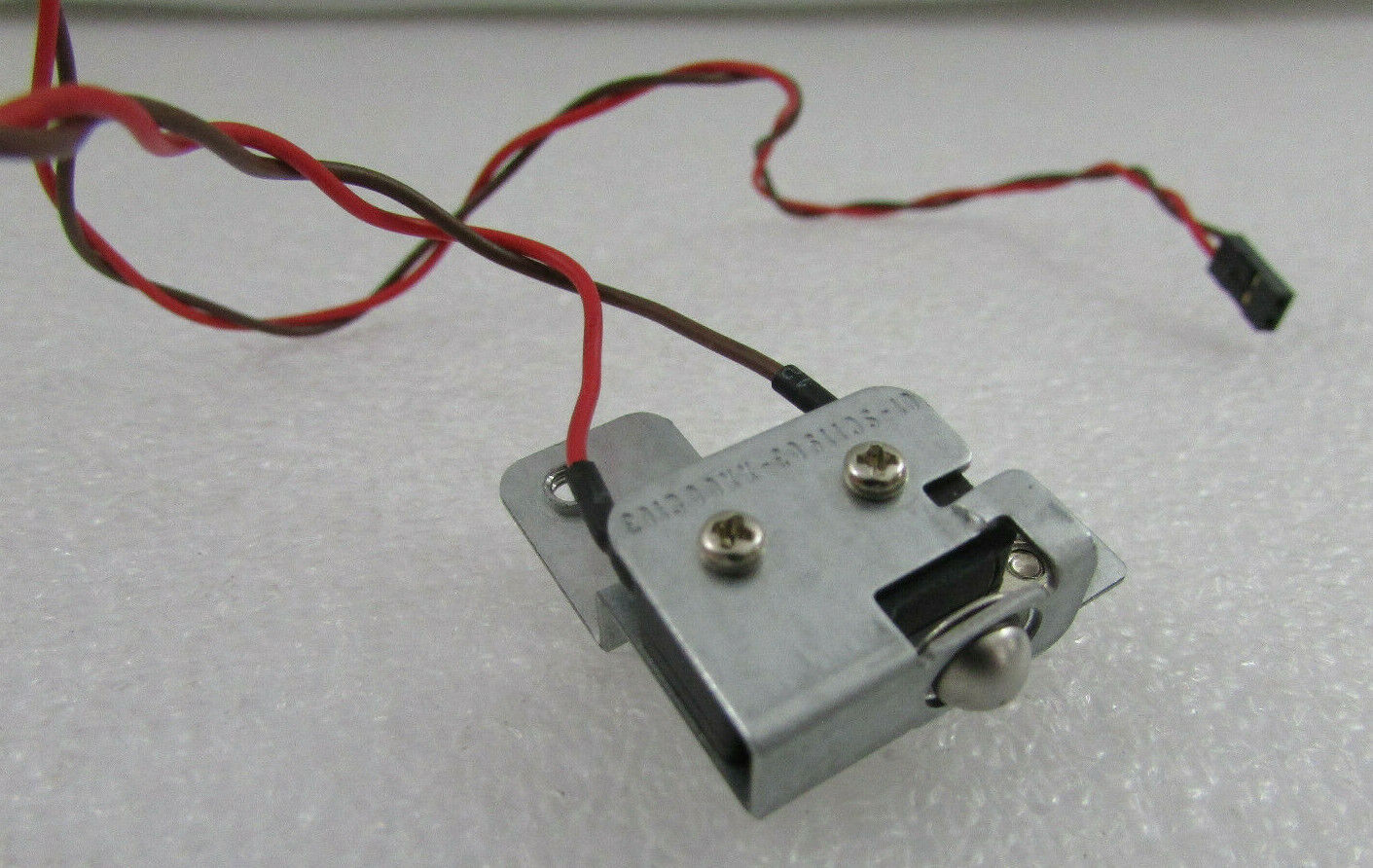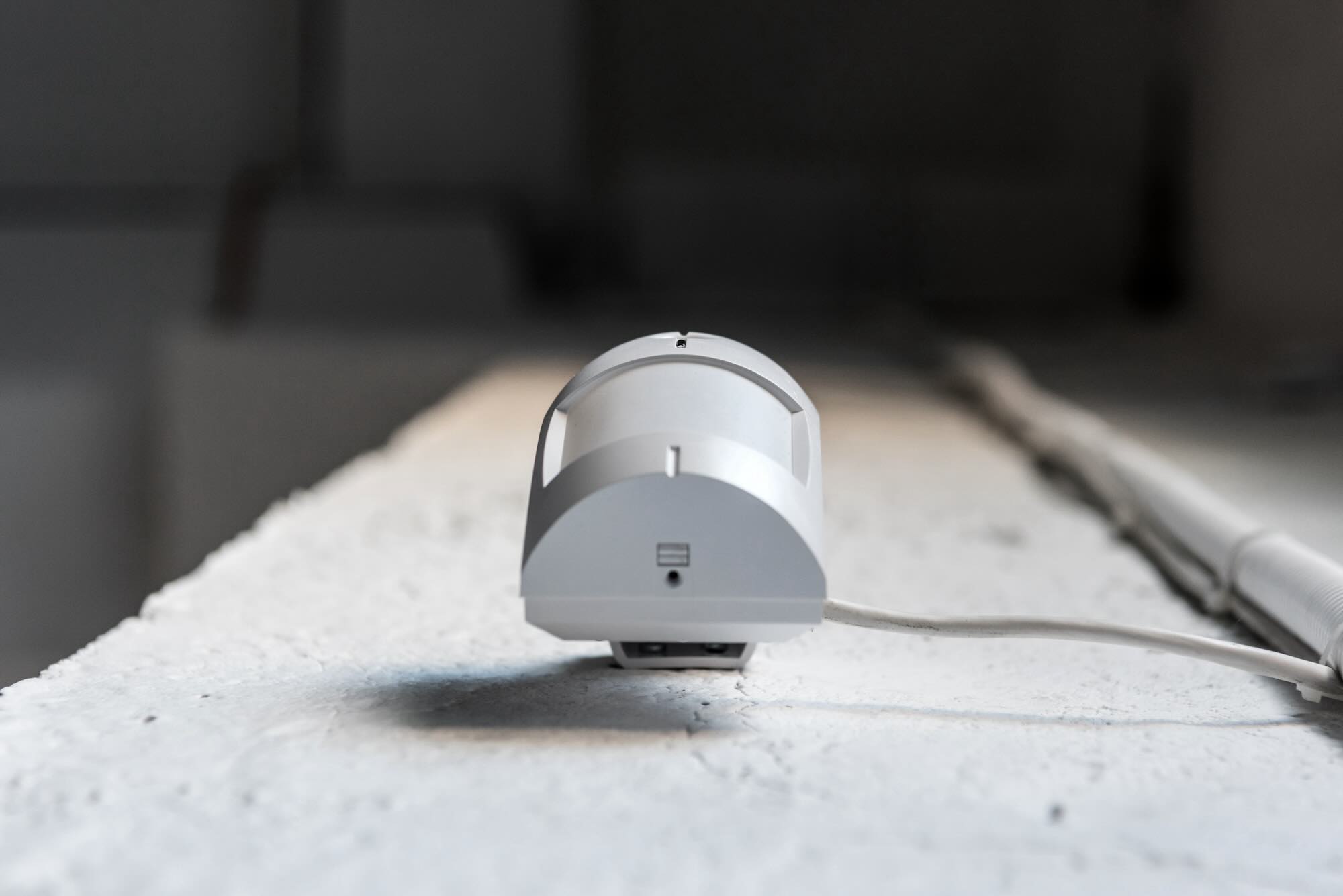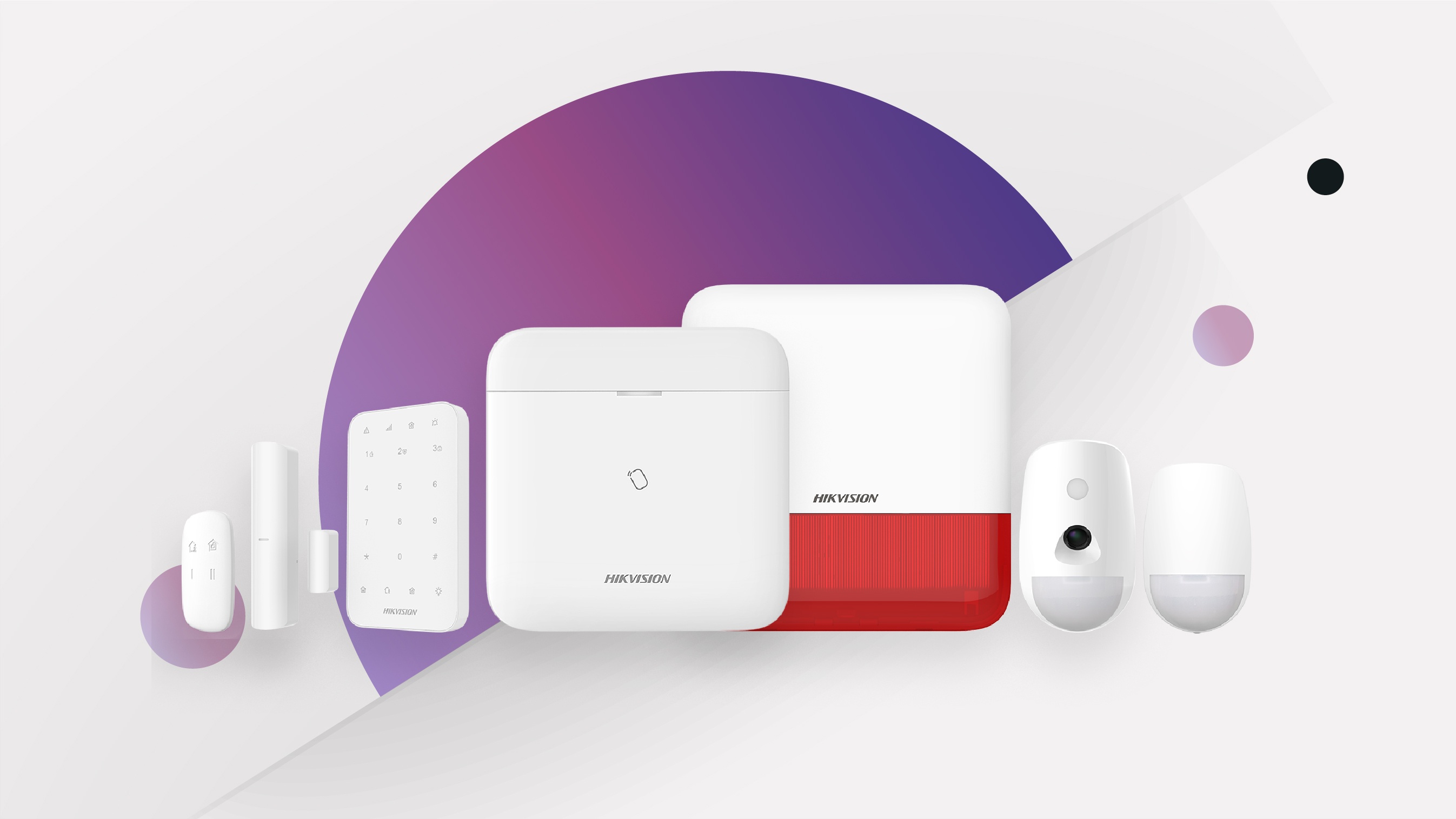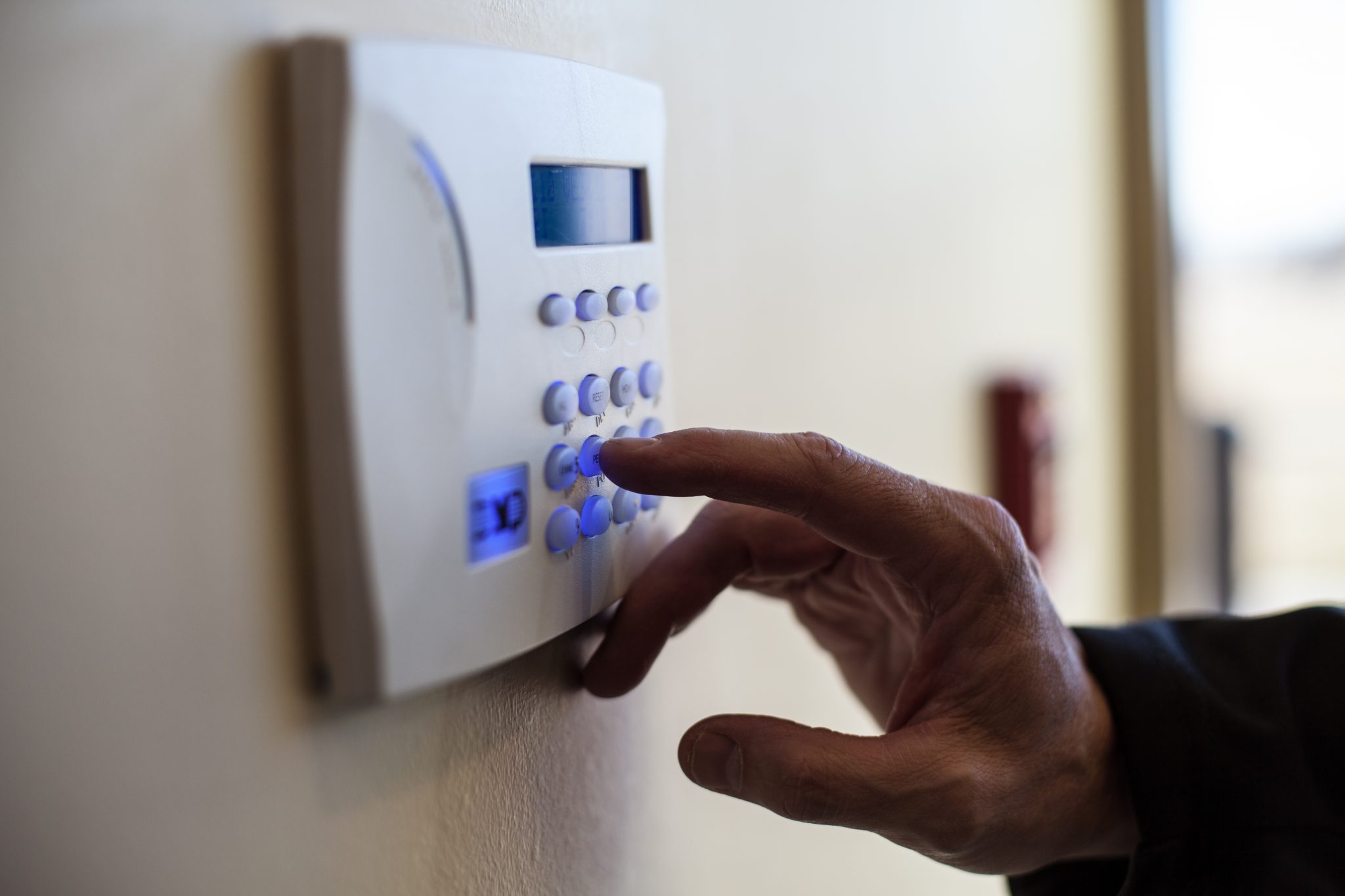Home>Home Security and Surveillance>How To Implement Svelte Intrusion Detection


Home Security and Surveillance
How To Implement Svelte Intrusion Detection
Modified: March 6, 2024
Enhance your home security and surveillance with our guide on how to implement Svelte intrusion detection. Discover effective measures to safeguard your property and loved ones.
(Many of the links in this article redirect to a specific reviewed product. Your purchase of these products through affiliate links helps to generate commission for Storables.com, at no extra cost. Learn more)
Introduction
Ensuring the safety and security of our homes has never been more important. With the increasing number of threats and incidents, having an effective home security and surveillance system is crucial for peace of mind. Intrusion detection systems play a vital role in protecting our homes from unauthorized access and potential dangers.
In this article, we will explore how to implement an intrusion detection system using the Svelte framework. Svelte is a modern JavaScript framework that allows developers to build efficient and reactive user interfaces. By leveraging the power of Svelte, we can create a robust and user-friendly intrusion detection system that provides real-time information and alerts.
Before we dive into the details of implementing an intrusion detection system with Svelte, let’s first understand what intrusion detection systems are and why they are essential for home security.
Key Takeaways:
- Svelte Makes Home Security Smarter
With Svelte, you can build a smart and efficient intrusion detection system for your home. It reacts in real-time, making it easier to monitor and respond to potential security threats. - Svelte Simplifies Security Monitoring
Svelte’s user-friendly interface and efficient code make it easier to visualize and understand potential security risks. It provides peace of mind by keeping homeowners informed and empowered.
Read more: What Is Wireless Intrusion Detection
Understanding Intrusion Detection Systems
Intrusion detection systems (IDS) are software or hardware-based systems designed to monitor network traffic and detect any unauthorized or malicious activities. They analyze network data, identify potential threats, and issue alerts or take proactive measures to prevent security breaches.
There are two main types of intrusion detection systems:
- Network-based IDS (NIDS): These systems monitor network traffic and analyze data packets to detect any suspicious activity. They can identify various types of attacks, such as port scanning, denial of service (DoS), or intrusion attempts.
- Host-based IDS (HIDS): These systems are installed on individual hosts (such as servers or workstations) and monitor their activity. They analyze log files, file changes, and system calls to detect any abnormal behavior.
Intrusion detection systems use a combination of signature-based and anomaly-based detection techniques. Signature-based detection relies on pre-defined patterns or signatures of known attacks. When a network packet or host activity matches a signature, it is flagged as a potential intrusion.
Anomaly-based detection, on the other hand, focuses on identifying deviations from normal network or host behavior. It establishes a baseline of normal activity and raises an alert when any unusual or suspicious activity is detected.
Implementing an effective intrusion detection system is crucial for protecting our homes from various threats, including unauthorized access, attempted break-ins, or even potential cyber attacks. It provides an additional layer of security and helps in early threat detection, reducing the risk of significant damages.
Now that we have a basic understanding of intrusion detection systems, let’s explore the benefits of using the Svelte framework for implementing such a system.
Overview of Svelte Framework
Svelte is a modern JavaScript framework that allows developers to build highly efficient and reactive user interfaces. Unlike traditional frameworks that run in the browser and have runtime overhead, Svelte compiles the code during the build process, resulting in smaller and faster applications.
What sets Svelte apart from other frameworks is its approach to reactive updates. Instead of using a virtual DOM (like React) or a runtime library (like Angular), Svelte compiles the code into highly optimized JavaScript, making the application faster and more lightweight.
Svelte provides a component-based architecture, making it easy to build reusable and modular UI components. It uses a declarative syntax similar to HTML, allowing developers to create interactive applications with ease. The framework also supports two-way data binding, making it simple to handle user input and update the application state.
Another notable feature of Svelte is its ability to update only the parts of the UI that have changed. This approach, known as selective reactivity, makes the application more performant by minimizing unnecessary updates and reducing CPU usage.
Svelte also supports building reactive animations and transitions out of the box, making it a powerful tool for creating visually appealing user interfaces. It provides a built-in animation system that can handle complex transitions with ease.
Furthermore, Svelte has a minimalistic API surface, resulting in a smaller learning curve compared to other frameworks. It provides a straightforward and intuitive development experience while offering powerful tooling and support for features like code splitting and lazy loading.
Overall, Svelte is an excellent framework for building efficient and reactive user interfaces. Its performance optimizations, straightforward syntax, and extensive feature set make it an ideal choice for implementing an intrusion detection system.
In the next section, we will explore the benefits of using the Svelte framework specifically for intrusion detection.
Benefits of Using Svelte for Intrusion Detection
When it comes to implementing an intrusion detection system, using the Svelte framework offers several benefits that contribute to the effectiveness and efficiency of the system. Let’s explore some of these benefits:
- Efficiency: Svelte’s compiler-driven approach eliminates runtime overhead, resulting in highly optimized and efficient code. This means that our intrusion detection system will run smoothly and consume fewer system resources, allowing for faster and more responsive analysis of network data.
- Reactivity: Svelte’s reactive nature ensures that our intrusion detection system stays up-to-date with real-time network information. Any changes in network traffic or security events will trigger automatic updates to the user interface, providing immediate feedback and alerts to the user.
- Component-Based Architecture: Svelte’s component-based architecture makes it easy to create reusable and modular components for our intrusion detection system. This allows for better code organization, maintainability, and scalability. We can easily incorporate additional features or expand the system without complex code restructuring.
- Simple Syntax: Svelte’s declarative syntax, similar to HTML, makes it straightforward to define the interface and behavior of our intrusion detection system. This simplicity enhances productivity and readability, allowing developers to focus on the core functionality of the system without unnecessary complexity.
- Data Binding: Svelte’s two-way data binding simplifies the handling of user input and the synchronization of data between components. This is particularly useful for an intrusion detection system where real-time information needs to be displayed and updated dynamically.
- Animation and Transitions: Svelte’s built-in animation system enables us to create engaging visual effects and transitions within our intrusion detection system. This can enhance the user experience by providing visual feedback when security events occur or when displaying system status updates.
- Extensive Tooling: Svelte provides a range of tools and plugins that enhance the development experience. With features like code splitting and lazy loading, our intrusion detection system can be optimized for performance, resulting in faster initial load times and improved user experience.
By utilizing the capabilities of the Svelte framework, we can implement an intrusion detection system that is efficient, reactive, and user-friendly. The combination of performance optimizations, reactivity, and intuitive development experience makes Svelte an ideal choice for building a robust and responsive home security solution.
Now that we understand the benefits of using Svelte for intrusion detection, let’s dive into the steps involved in implementing such a system.
Step 1: Setting Up the Svelte Environment
Before we can start implementing the intrusion detection system using Svelte, we need to set up our development environment. Follow these steps to get started:
- Install Node.js: Svelte requires Node.js to run. Visit the official Node.js website (https://nodejs.org) and download the latest LTS (Long Term Support) version for your operating system. Follow the installation instructions to install Node.js.
- Create a New Svelte Project: Once Node.js is installed, open your terminal or command prompt and navigate to the directory where you want to create your project. Run the following command to create a new Svelte project:
- Navigate to the Project Directory: Use the `cd` command to navigate into the project directory:
- Install Dependencies: Inside the project directory, run the following command to install the dependencies needed for the project:
- Start the Development Server: Once the dependencies are installed, start the development server by running the following command:
npx degit sveltejs/template svelte-intrusion-detection
This command will create a new directory named `svelte-intrusion-detection` with all the necessary files and a basic project structure.
cd svelte-intrusion-detection
npm install
This command will install all the required packages specified in the `package.json` file.
npm run dev
This command will start the Svelte development server and provide you with a local URL where you can access your application.
With these steps, we have set up our Svelte environment and are ready to proceed with implementing the intrusion detection system. In the next step, we will focus on collecting and analyzing network data.
When implementing Svelte intrusion detection, make sure to regularly update and maintain your intrusion detection system to ensure it can effectively identify and respond to potential security threats.
Step 2: Collecting and Analyzing Network Data
In this step, we will focus on collecting and analyzing network data, which is the foundation of any intrusion detection system. Follow these steps to implement this crucial functionality:
- Network Data Collection: To collect network data, we can make use of packet sniffing libraries or tools like pcap or libpcap. These libraries allow us to capture and analyze network packets in real-time. Depending on your programming language of choice, you can find appropriate libraries or tools that provide packet sniffing capabilities.
- Packet Parsing: Once network packets are captured, the next step is to parse them to extract relevant information. This includes source and destination IP addresses, protocol type, port numbers, and any payload data. This parsed information will be used for further analysis.
- Network Traffic Analysis: With the parsed packet data, we can perform various analysis techniques to identify any suspicious or anomalous activities. This analysis can include examining packet headers, payload content, traffic patterns, and statistical anomalies. Implementing intrusion detection algorithms such as signature-based, anomaly-based, or machine learning-based techniques can help identify potential intrusions.
- Alert Generation: Whenever a potential intrusion or security event is detected based on the analysis, an alert should be generated. This alert can be displayed in the user interface or sent via notifications to the system administrator or homeowner.
It is important to note that implementing network data collection and analysis requires a comprehensive understanding of network protocols, packet structures, and security concepts. Additionally, you may need to handle issues such as packet fragmentation, encryption, and protocol-specific parsing to ensure accurate and effective analysis.
By collecting and analyzing network data in real-time, we can detect and identify potential security threats or intrusion attempts. In the next step, we will focus on implementing the intrusion detection algorithms.
Step 3: Implementing the Intrusion Detection Algorithms
Implementing intrusion detection algorithms is a crucial step in building an effective intrusion detection system. In this step, we will focus on integrating the intrusion detection algorithms into our Svelte application. Follow these steps to implement the algorithms:
- Select Intrusion Detection Techniques: Decide on the specific intrusion detection techniques you want to implement in your system. This could include signature-based detection, anomaly-based detection, or machine learning-based detection. Choose the techniques that align with your specific security requirements and the nature of the threats you want to detect.
- Define Signature Patterns: If you are implementing signature-based detection, define the signature patterns or rules for the specific attacks you want to detect. These patterns or rules can be based on known attack patterns, malicious keywords, or specific packet content.
- Implement Anomaly Detection: If you are implementing anomaly-based detection, devise methods to establish normal network behavior and identify deviations from that behavior. This could involve analyzing traffic patterns, statistical analysis, or machine learning models to detect unusual or abnormal activities.
- Integrate Detection Algorithms: Integrate the selected intrusion detection algorithms into your Svelte application. This may involve writing JavaScript functions or modules that implement the detection algorithms or making use of external libraries or services that provide intrusion detection functionality.
- Real-Time Monitoring and Analysis: Continuously monitor and analyze network data in real-time using the implemented detection algorithms. This includes applying the signature patterns or anomaly detection techniques to the parsed network packets or relevant network data.
- Generate Alerts: Whenever an intrusion or suspicious activity is detected based on the implemented algorithms, generate an alert. This could involve displaying the alert in the user interface, sending notifications to the system administrator, or triggering automated actions to mitigate the potential threat.
Implementing effective intrusion detection algorithms requires a deep understanding of security concepts and relevant detection techniques. It is essential to keep the algorithms up-to-date and continuously improve them based on new threats and vulnerabilities in order to maintain the system’s effectiveness.
With the intrusion detection algorithms implemented in our Svelte application, we can now move on to the next step: visualizing the intrusion detection results.
Step 4: Visualizing Intrusion Detection Results
Visualizing the intrusion detection results is crucial for understanding the security status of our home and identifying potential threats. In this step, we will focus on how to visualize the intrusion detection results in our Svelte application. Follow these steps to implement the visualization:
- Select Visualization Techniques: Decide on the visualization techniques that best represent the intrusion detection results. This could include charts, graphs, maps, or any other visual representations that effectively convey the security information to the user.
- Design the User Interface: Design the user interface elements that will display the intrusion detection results. This may include creating dashboard components, alert panels, or interactive visualizations that provide an overview of the security events detected.
- Integrate Visualization Components: Integrate the selected visualization techniques into your Svelte application. This may involve using libraries or frameworks that provide charting or mapping capabilities, or implementing custom components based on your design specifications.
- Display Real-Time Updates: Ensure that the visualization components display real-time updates of the intrusion detection results. This could involve using reactive data bindings in Svelte to automatically update the visuals whenever a new security event or intrusion is detected.
- Enhance User Interactions: Implement user interactions within the visualization components to allow the user to explore and interact with the intrusion detection results. This could include features such as filtering, drill-downs, or tooltips that provide additional information about specific security events.
- Provide Alert Notifications: In addition to visualizing the intrusion detection results within the application, consider implementing alert notifications to notify the user of any detected security events. This could involve sending push notifications, email alerts, or SMS messages to ensure timely awareness of potential threats.
The visualization of intrusion detection results plays a vital role in providing an intuitive and informative interface for users to monitor the security status of their homes. Choose visualization techniques that effectively communicate the detected security events and enable users to make informed decisions regarding their home security.
With the intrusion detection results effectively visualized in our Svelte application, we have successfully implemented the key components of our intrusion detection system. In the next section, we will conclude our article with a summary and final thoughts.
Conclusion
In this article, we explored how to implement a comprehensive intrusion detection system using the Svelte framework. By leveraging Svelte’s efficiency, reactivity, and component-based architecture, we can create a robust and user-friendly home security solution.
We started by understanding the importance of intrusion detection systems in ensuring the safety and security of our homes. We then delved into the features and benefits of using the Svelte framework for implementing such a system.
We discussed the steps involved in setting up the Svelte environment, collecting and analyzing network data, implementing intrusion detection algorithms, and visualizing the detection results. Each step plays a crucial role in building an effective and reliable intrusion detection system.
Throughout the implementation process, it is essential to consider best practices and keep the intrusion detection algorithms up-to-date to effectively detect evolving threats. Regular monitoring, analysis, and refinement are key to maintaining the system’s effectiveness and ensuring optimal security.
By integrating the intrusion detection system into our Svelte application, we empower homeowners to actively monitor and respond to potential security threats. The combination of real-time data analysis, visualization, and alert notifications provides a comprehensive solution for home security.
In conclusion, implementing an intrusion detection system using the Svelte framework enables us to create a modern, efficient, and user-friendly solution for ensuring the safety and security of our homes. By continuously monitoring and analyzing network data, implementing efficient detection algorithms, and visualizing the detection results, homeowners can have increased peace of mind in knowing that their homes are protected from potential intrusions.
Remember, implementing a robust home security system is an ongoing endeavor. Staying informed about the latest security threats, regularly updating intrusion detection algorithms, and continuously improving the system are crucial steps in keeping up with the ever-changing landscape of home security.
Now it’s your turn to leverage the power of the Svelte framework and create an intrusion detection system that meets your specific security needs. Stay vigilant, stay secure.
Frequently Asked Questions about How To Implement Svelte Intrusion Detection
Was this page helpful?
At Storables.com, we guarantee accurate and reliable information. Our content, validated by Expert Board Contributors, is crafted following stringent Editorial Policies. We're committed to providing you with well-researched, expert-backed insights for all your informational needs.














